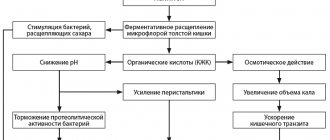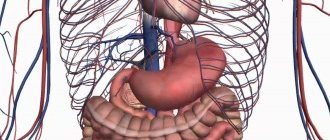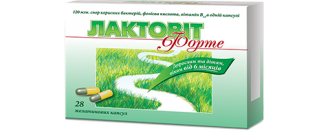Write a review
Reviews: 0
Manufacturers: Stada Arzneimittel AG (Germany)
Active ingredients
- Cefaclor
- Cephalexin
Disease class
- Otitis externa, unspecified
- Purulent and unspecified otitis media
- Acute pharyngitis, unspecified
- Acute upper respiratory tract infection of multiple and unspecified localization
- Acute lower respiratory tract respiratory infection, unspecified
- Chronic pharyngitis
- Chronic sinusitis, unspecified
- Chronic tonsillitis
- Acute tubulointerstitial nephritis
- Gonococcal infection
- Acute tonsillitis, unspecified
- Other tubulointerstitial kidney diseases
- Chronic tubulointerstitial nephritis
- Urinary tract infection without established localization
- Acute sinusitis, unspecified
Clinical and pharmacological group
- Not indicated. See instructions
Pharmacological action
- Antibacterial
- Bactericidal
Pharmacological group
- Cephalosporins
Gel for the preparation of suspension for oral administration Cefaclor Stada (Cefaclor Stada)
Instructions for medical use of the drug
Description of pharmacological action
Cefaclor Stada is effective against infections caused by the following gram-positive and gram-negative pathogens: Bacteroides spp., Citrobacter diversus, Escherichia coli, Haemophilus influenzae, including strains resistant to ampicillin, Klebsiella, Moraxella catarrhalis, Neisseria gonorrhea, including penicillin-forming strains, Peptococcus spp., Peptostre ptococcus spp., Propionibacterium, Proteus mirabilis, staphylococci, including coagulase-positive, coagulase-negative and penicillin-forming strains, beta-hemolytic and other streptococci, Streptococcus pneumoniae. For infections caused by the following pathogens, the effect of Cefaclor Herd should be checked: Bacteroides fragilis, Citrobacter freundii, indole-positive Proteus spp., Streptococcus viridans. Cefaclor Stada is not effective against infections caused by: Acinetobacter, chlamydia, most types of enterobacteria, enterococci (Enterococcus faecalis and faecium), Morganella morganii, mycobacteria, mycoplasma, fungi, Proteus vulgaris, Protozoen, Providencia, Pseudomonas, Serratia, methicillin-resistant staphylococcus kami. Secondary development of resistance (resistance of bacteria previously sensitive to Cefaclor after treatment with an antibiotic) is rarely observed.
Indications for use
Treatment of acute and chronic infections of varying severity, which are caused by pathogens sensitive to Cefaclor when taken orally: - infections of the upper and lower respiratory tract; - infections of the ear, nose and throat area: inflammation of the middle ear (otitis media), inflammation of the lateral sinuses (sinusitis), infection of the tonsils (tonsillitis) and pharynx (pharyngitis); - kidney and urinary tract infections; - skin and soft tissue infections, gonorrhea.
Release form
granules for the preparation of suspension for oral administration 63.5 g 250 mg/5 ml; bottle (bottle) of dark glass 100 ml with measuring spoon (spoon) box (box) 1; granules for the preparation of suspension for oral administration 63.5 g 125 mg/5 ml; bottle (bottle) of dark glass 100 ml with measuring spoon (spoon) box (box) 1; Composition Capsules 1 capsule. cefaclor monohydrate 524.48 mg (corresponding to 500 mg of cefaclor) excipients: dimethicone - 10 mg; corn starch - 47.52 mg; magnesium stearate - 8 mg capsule shell: gelatin - 99.02 mg; purified water - 14.98 mg; titanium dioxide (E171) - 2.99 mg; indigotine (E132) - 0.003 mg in blister 10 pcs. (caps. 500 mg); There are 1 or 2 blisters in a box. Granules (63.5 g) for the preparation of 100 ml of suspension 125 mg/5 ml or 250 mg/5 ml for oral administration 1 vial. cefaclor monohydrate 2622 or 5244 mg (corresponding to 2500 or 5000 mg of cefaclor) excipients: dimethicone - 0.1 g; corn starch - 0.2 g; methylcellulose - 0.06 g; sodium dodecyl sulfate - 0.015 g; sucrose - 57.3302 g; xanthan gum - 0.15 g; strawberry flavoring - 0.4 g 1 measuring spoon of the prepared suspension contains 2.86 g of sucrose = 0.24 XE in 100 ml dark glass bottles, complete with a measuring spoon; There are 1 or 2 bottles in a box.
Pharmacodynamics
Cefaclor Stada is effective against infections caused by the following gram-positive and gram-negative pathogens: Bacteroides spp., Citrobacter diversus, Escherichia coli, Haemophilus influenzae, including strains resistant to ampicillin, Klebsiella, Moraxella catarrhalis, Neisseria gonorrhea, including penicillin-forming strains, Peptococcus spp., Peptostre ptococcus spp., Propionibacterium, Proteus mirabilis, staphylococci, including coagulase-positive, coagulase-negative and penicillin-forming strains, beta-hemolytic and other streptococci, Streptococcus pneumoniae. For infections caused by the following pathogens, the effect of Cefaclor Herd should be checked: Bacteroides fragilis, Citrobacter freundii, indole-positive Proteus spp., Streptococcus viridans. Cefaclor Stada is not effective against infections caused by: Acinetobacter, chlamydia, most types of enterobacteria, enterococci (Enterococcus faecalis and faecium), Morganella morganii, mycobacteria, mycoplasma, fungi, Proteus vulgaris, Protozoen, Providencia, Pseudomonas, Serratia, methicillin-resistant staphylococcus kami. Secondary development of resistance (resistance of bacteria previously sensitive to Cefaclor after treatment with an antibiotic) is rarely observed.
Use during pregnancy
Although animal studies and observations of women during pregnancy have not revealed any harmful effects on the fetus, Cefaclor Stida should be used (especially in the first trimester of pregnancy) only after a careful assessment of the benefits and harms of its use and only if absolutely necessary for treatment pregnant woman. During breastfeeding, the drug should also be used only in case of urgent need, because Cefaclor passes into breast milk. After feeding such milk, an infant may develop hypersensitivity to cefaclor, which leads to diarrhea or fungal infections of the mucous membranes.
Contraindications for use
Hypersensitivity to antibiotics of the cephalosporin group, allergic reactions to cephalosporins or other components. The use of Cefaclor Stada is also contraindicated if patients have ever had hypersensitivity to penicillin, because in this case, an allergic reaction to cephalosporin is also possible (parallel allergy). When using Cefaclor Herd, any manifestations of allergic reactions, the presence of asthma in the patient should be taken into account, and only after consultation with the attending physician, under certain conditions, Cefaclor should be used.
Side effects
Blood and hematopoiesis: in some cases - impaired hematopoiesis (eosinophilia, leukopenia, lymphocytosis, thrombocytopenia; rarely - neutropenia and hemolytic anemia). These phenomena disappear after the end of treatment on their own. In rare cases, there is a significant decrease in white blood cells (agranulocytosis). Gastrointestinal tract: loss of appetite, abdominal pain, diarrhea, vomiting, constipation, nausea, which are mild in nature and often disappear during or, in extreme cases, after the end of treatment. If severe, prolonged diarrhea occurs during or after treatment, you should notify your doctor, as these phenomena may be hiding a serious intestinal disease (pseudomembranous enterocolitis), which must be treated immediately. In this case, you should not take any fixing (reducing peristalsis) drugs; rarely - an increase in the level of liver enzymes (transaminase, alkaline phosphatase) in the serum, which normalizes after the end of treatment with the drug. In some cases, transient damage to liver cells (hepatitis) and disruption of the outflow of bile (a sign of the disease is jaundice) with a slight increase in bilirubin are observed. Nervous system: Hallucinations, excessive behavior (hyperactivity), nervousness, drowsiness or loss of sleep, dizziness and confusion have been reported in rare cases at high dosages or in severe renal impairment. As with the use of other antibiotics of this series (cephalosporin antibiotics), an increased tendency to seizures cannot be ruled out. Kidneys, urinary tract and genital organs: in rare cases, sudden onset inflammation of the kidneys (acute interstitial nephritis) has been reported, which resolves on its own after treatment. A slight increase in urea or creatinine in the blood is also possible; in some cases, an increase in protein in the urine (proteinuria) is reported. Hypersensitivity phenomena: allergic skin reactions are possible (for example, redness of the skin accompanied by heat, itching, urticaria with the formation of blisters), measles-like rashes (maculopapulosis, painful exanthema). Another sign of hypersensitivity is an increase in the number of certain blood cells (eosinophilia), a positive Coombs test (a test of certain antibodies in the blood). Reactions to the drug similar to the symptoms of serum sickness, varying degrees of severe inflammatory hyperemia of the skin (multiple forms of erythema) or the above-mentioned skin reactions, accompanied by difficulty moving the joints and fever, have also been reported. Typically, these allergic phenomena occur during or after repeated treatment with Cefaclor (more often in children than in adults) and disappear a few days after the end of treatment. Increased sensitivity of varying severity to cephalosporin antibiotics - up to allergic (anaphylactic) shock - is observed much less frequently when taken orally than when given by injection (IV or IM). Severe sudden onset of hypersensitivity manifests itself in the form of a drop in pressure up to life-threatening shock, swelling of the face, palpitations, internal swelling of the larynx with narrowing of the airways, suffocation, swelling of the tongue. These reactions sometimes occur soon after the first dose of the drug. When these phenomena occur, the patient requires urgent medical attention. In rare cases, severe skin phenomena with life-threatening allergic reactions (such as Stevens-Johnson syndrome, exfoliative dermatitis, Lyell's syndrome) have been described during treatment with Cefaclor. The relationship with taking Cefaclor has not yet been proven. Other: when taking Cefaclor in large doses or with severely limited renal function, transient hypertension occurs in rare cases. Long-term or repeated use of Cefaclor can lead to secondary infection (superinfection) and colonization with Cefaclor-insensitive (resistant) microbes or fungi. If the patient has an allergic reaction, you should stop taking Cefaclor Stud and inform your doctor. In case of sudden symptoms of severe hypersensitivity, you should immediately call a doctor, because in this case, the patient needs urgent medical attention.
Directions for use and doses
Capsules: orally, without chewing, with a small amount of liquid, possibly during meals. Adults and children over 10 years old: 1 capsule. (500 mg) 3 times a day. For severe infections - 2 capsules. (1 g) 3 times a day. The maximum dose is 8 capsules. (4 g) per day. For the treatment of acute gonorrheal urethritis - 6 caps. (3 g), possibly in combination with 1 g probenecid. Granules for preparing a suspension: the suspension is taken orally during meals. Children under 6 years of age: 30 mg/kg/day in 3 divided doses (10 mg/kg 3 times a day). For severe infections - 40–50 mg/kg/day. The maximum dose for children under 6 years of age is 1 g/day. For mild infections, for example, uncomplicated urinary tract infections, 20 mg/kg/day in 2–3 doses every 12 and 8 hours. Children from 6 to 10 years: 1 scoop (250 mg) 3 times a day. For severe infections - 1 scoop (250 mg) 4 times a day. For inflammation of the middle ear - 2 scoops (500 mg) 2 times a day. For mild infections, for example, uncomplicated urinary tract infections, 1 scoop (250 mg) 2 times a day (morning and evening). Children over 10 years of age, adolescents and adults: usually 2 scoops (500 mg) 3 times daily. With limited renal function: can be taken without changing the dosage. The duration of treatment is determined by the attending physician. Usually the course lasts 7–10 days. Preparation of the suspension. To prepare the suspension, fill the original bottle with granulate with fresh drinking water one finger below the top mark and mix the contents thoroughly. After the formed foam settles, add fresh drinking water to the upper mark. The suspension should be mixed again.
Overdose
Although cases of poisoning with Cefaclor have not yet been observed, as a precaution you should immediately consult a doctor if you suspect poisoning. You should keep the package ready so that you can inform your doctor about the medicine you are taking.
Interactions with other drugs
Cefaclor and antibiotics: If possible, Cefaclor Stida should not be combined with drugs that inhibit bacterial growth (for example, chloramphenicol, erythromycin, sulfonamides or tetracycline), because the effect of Cefaclor may be reduced. An enhanced effect may be observed when combined with certain other anti-infective drugs (aminoglycosides). Cefaclor and probenecid: simultaneous administration of probenecid inhibits the excretion of Cefaclor by the kidneys and leads to a longer presence of Cefaclor in the blood at a higher concentration. Cefaclor and anticoagulants: in some cases, in patients taking drugs that inhibit blood clotting (coumarin-type anticoagulants) simultaneously with Cefaclor, an increase in PT with or without bleeding is observed (see “Precautions”).
Precautions for use
The use of Cefaclor Stud may be ineffective in patients suffering from severe gastrointestinal disorders with vomiting and diarrhea, because in this case, sufficient absorption and therapeutic effect of Cefaclor is not ensured. In some cases, patients taking drugs that reduce blood clotting (coumarin-type anticoagulants) simultaneously with Cefaclor Stada experience an increase in clotting time (CT) with or without bleeding, so it is necessary to carefully monitor the timing of monitoring coagulation parameters. With long-term use (>3 weeks), hematopoiesis, liver and kidney function should be regularly monitored, and blood and urine tests should be performed regularly. Effect on laboratory tests. The results of non-enzymatic methods for determining sugar and protein in urine, as well as the Coombs test, may be false positive. It should be noted that these phenomena can also occur with short-term use of the drug. Diabetics should take into account that 1 scoop (5 ml) of the prepared Cefaclor Stud suspension contains 2.86 g of sucrose = 0.24 XE. If one dose of medication is missed, you should take it as soon as prescribed, and if several times, contact your doctor for monitoring in order to promptly identify a possible worsening of the disease. If treatment is interrupted or terminated prematurely, there is a risk of residual effects.
Storage conditions
List B: In a dry place, protected from light, at a temperature not exceeding 25 °C. Store the prepared suspension in the refrigerator (2–8 °C) and use within 14 days.
Best before date
36 months
ATX classification:
J Antimicrobials for systemic use
J01 Antimicrobials for systemic use
J01D Other beta-lactam antibiotics
J01DC Second generation cephalosporins
J01DC04 Cefaclor
Cefaclor Stada®
Between 75% and 92% of a cefaclor dose is absorbed primarily from the upper small intestine. After a single dose of cefaclor on an empty stomach at a dose of 250 mg, 500 mg and 1000 mg, the maximum plasma concentration was reached 60 minutes after administration and was approximately 7, 15 and 26 mg/l, respectively.
In children receiving cefaclor on an empty stomach at a dose of 10 mg/kg and 15 mg/kg, the maximum serum concentration was approximately 10.8 mg/L and 13.1 mg/L, respectively. After 10 days of taking cefaclor, there was no accumulation in the body.
Although food intake does not affect the extent of absorption (area under the curve), it does reduce the rate of absorption, resulting in an increase in the time to reach maximum concentration (tmax) and a 30% decrease in maximum concentration (Cmax).
4-6 hours after administration, the active drug is usually not detected in the plasma.
Distribution:
Cefaclor is distributed in various tissues and physiological fluids. For example, high concentrations are achieved in the prostate gland and bile. Serum protein binding is about 25%. Below are the concentrations of cefaclor in human tissues and fluids at various time intervals after administration.
| Tissue/body fluid | Dose (mg) | Concentration (µg/ml or µg/g) |
| Sputum | 500 and 3×500 | 0-3 |
| Amygdala | 500 and 3×500 | 6-8 |
| 1000 | 2,8 | |
| Interstitial fluid | 500 | 0,625-1,7 |
| 1000 | 1,45-3,3 | |
| Pus | 500 | 0,4 |
| Leather | 1000 | 2,8 |
| Fascia | 1000 | 1,5 |
| Tubular bone | 1000 | 1,9 |
| Prostate | 500 | 0,24-1,94 |
| Bile | 1000 | 5,9-12,1 |
| Milk | 500 | 0,35-0,64 |
| Amniotic fluid | 500 | 1,3-3,63 |
Metabolism and excretion:
In solution, cefaclor is chemically unstable and disintegrates spontaneously in physiological fluids, for example, in urine. Therefore, the extent of true metabolic clearance is difficult to assess. Metabolized drug, if present, constitutes a very small proportion of cefaclor breakdown products.
Excretion occurs mainly through the kidneys. Within 8 hours after administration, 50-70% of the dose is excreted by the kidneys in the form of a microbiologically active drug and up to 30% of the dose in the form of inactive decay products.
92% of a dose of radiolabeled cefaclor is excreted by the kidneys and 4% through the gastrointestinal tract.
The average plasma half-life is 45 minutes (29-60 minutes). It is dose dependent, i.e. after a single dose of a higher dose (eg
500 mg or 1000 mg) the half-life is slightly longer than after a single dose of lower doses. The serum half-life is increased in patients with impaired renal function, but when such patients take cefaclor three times a day, the drug does not accumulate in the body. In anuria, the serum half-life of cefaclor is up to 3.5 hours.
Cefaclor is eliminated by hemodialysis. Hemodialysis reduces serum half-life by 25-30%.
The apparent volume of distribution is approximately 26 l.
The renal clearance of cefaclor is in the range of 188-230 ml/min, and the total clearance is 370-455 ml/min.
The results of pharmacokinetic studies in children and adults are practically the same.
Similar drugs:
- Augmentin Oral tablets
- Tea tree DN Ointment for external use
- Augmentin Powder for suspension for oral administration
- Bactrim Oral suspension
- Dioxydin Mouth rinse solution
- Pancef Oral tablets
- Nifuroxazide (Nifuroxazide) Oral tablets
- Cifran OD Oral tablets
- Pancef Granules for the preparation of suspension for oral administration
- Augmentin ES Powder for oral solution
** The Drug Directory is intended for informational purposes only. For more complete information, please refer to the manufacturer's instructions. Do not self-medicate; Before you start using Cefaclor Stada, you should consult a doctor. EUROLAB is not responsible for the consequences caused by the use of information posted on the portal. Any information on the site does not replace medical advice and cannot serve as a guarantee of the positive effect of the drug.
Are you interested in the drug Cefaclor Stada? Do you want to know more detailed information or do you need a doctor's examination? Or do you need an inspection? You can make an appointment with a doctor - the Euro lab is always at your service! The best doctors will examine you, advise you, provide the necessary assistance and make a diagnosis. You can also call a doctor at home . Euro lab clinic is open for you around the clock.
** Attention! The information presented in this medication guide is intended for medical professionals and should not be used as a basis for self-medication. The description of the drug Cefaclor Stada is provided for informational purposes and is not intended for prescribing treatment without the participation of a doctor. Patients need to consult a specialist!
If you are interested in any other drugs and medications, their descriptions and instructions for use, information about the composition and form of release, indications for use and side effects, methods of use, prices and reviews of drugs, or you have any other questions and suggestions - write to us, we will definitely try to help you.





